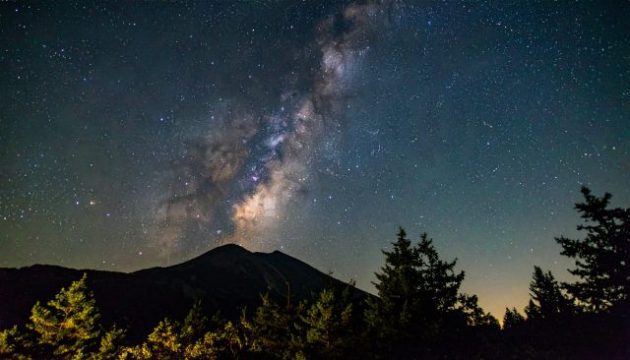How well do you really know our corner of the universe? When we look up at the night sky, we see a serene, glittering river of stars. But that peaceful view hides the true nature of our home galaxy. The Milky Way is a sprawling, dynamic, and sometimes violent place, a cosmic metropolis of creation and destruction filled with astonishing truths that challenge our sense of scale and significance.
Here are ten remarkable insights about the Milky Way that will change the way you see our place in the cosmos.
10. It Could Be Teeming with Billions of Habitable Planets
Recent discoveries suggest the Milky Way contains at least 100 to 400 billion planets—far more than the number of stars. Among these, tens of billions could be rocky worlds orbiting within their star’s “Goldilocks Zone,” where conditions are just right for liquid water. While we haven’t found life yet, the sheer number of potential habitable planets hints that our galaxy could be brimming with other worlds waiting to be explored.
9. A “Cosmic Year” Lasts Longer Than the Age of Dinosaurs
Our Sun takes about 230 million years to complete one orbit around the center of the Milky Way—a journey known as a “cosmic year.” The last time our solar system was in its current position, dinosaurs were just beginning to roam the Earth. In a single cosmic year, entire species rise and fall, continents shift, and the planet’s surface transforms, giving us a humbling perspective on the fleeting nature of human time.
8. It Has a Cannibalistic Past
The Milky Way grew to its immense size by “eating” smaller galaxies. Evidence of these cosmic meals is all around us in the form of vast stellar streams—ghostly trails of stars left behind by dwarf galaxies the Milky Way has torn apart and absorbed. Even today, the Sagittarius Dwarf Galaxy is in the process of being devoured, showing that our galaxy’s cannibalistic habits are still ongoing.
7. The Milky Way Is On a Collision Course With Andromeda
The Milky Way isn’t alone in the cosmos. In about 4.5 billion years, it will collide with its nearest spiral neighbor, the Andromeda Galaxy. This won’t be a sudden crash but a slow, graceful merger unfolding over hundreds of millions of years. As the galaxies draw closer, Andromeda’s stars will fill our night sky, creating a spectacular cosmic display. Eventually, the two galaxies will merge into a single, giant elliptical galaxy, often nicknamed “Milkomeda” by astronomers.
6. It’s a Cosmic Nursery and Graveyard for Stars
The Milky Way is a place of constant creation and destruction. Within vast, colorful clouds of gas and dust known as nebulae, gravity pulls material together to form new stars and planetary systems. At the same time, massive stars that have reached the end of their lives explode in spectacular supernovae. These explosions forge heavy elements like iron, oxygen, and carbon, scattering them across the galaxy. The atoms in your body were formed in the heart of these dying stars billions of years ago. In a very real sense, we are made of stardust.
5. Most of the Galaxy Is Completely Invisible
Everything we can see, from stars and planets to glowing gas clouds, accounts for only about 15% of the Milky Way’s total mass. The remaining 85% is dark matter, a mysterious, invisible substance that neither emits nor reflects light. Scientists detect it only through its gravitational effects. Without dark matter, stars at the galaxy’s edges would move so fast they would escape into intergalactic space. Dark matter acts as the hidden scaffolding holding our entire galaxy together, shaping its structure in ways we cannot directly observe.
4. The Milky Way Has a Supermassive Black Hole
At the very center of the Milky Way lies Sagittarius A* (pronounced “Sagittarius A-star”), a supermassive black hole with the mass of 4.3 million suns. We cannot see it directly, but astronomers have confirmed its existence by observing stars orbiting at incredible speeds. These stars whirl around an invisible point like leaves caught in a cosmic whirlpool, performing a gravitational dance that reveals the presence of this enormous, hidden monster.
3. It’s a Cosmic Speed Demon Hurtling Through Space
Our entire galaxy is racing through the universe at an astonishing 1.3 million miles per hour (2.1 million km/h) relative to the cosmic microwave background radiation, the afterglow of the Big Bang. We do not feel this incredible motion because everything in our galactic vicinity is moving along with us. It is like being on a perfectly smooth bullet train, traveling faster than a speeding bullet without realizing it until you look out the window.
2. We Live in the Galactic Suburbs
Our solar system is located about 27,000 light-years from the chaotic galactic center, nestled peacefully in a minor spiral arm called the Orion Spur. Far from the heart of the action, we reside in the galactic suburbs. This location is incredibly fortunate because the galactic core is a hazardous place, constantly bombarded by intense radiation and the powerful gravitational forces of the central black hole. Our quiet neighborhood provides the stability necessary for life to evolve and thrive.
1. It’s a Giant Barred Spiral, Not Just a Band of Stars
While it appears as a scattered band of light from our vantage point, the Milky Way has a remarkably elegant structure. It is a barred spiral galaxy, with a dense, bright bar of older stars forming its core. This bar acts like a cosmic highway, funneling interstellar gas and dust inward and igniting furious bursts of star formation at the center. From this core, massive spiral arms rich with younger, blue stars and glowing nebulae sweep outward in a majestic celestial pinwheel.



